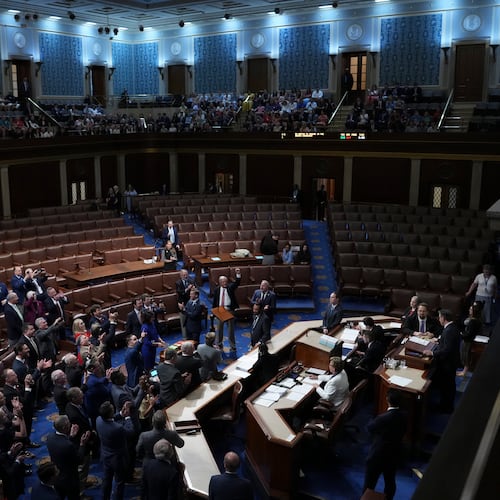As Georgia takes baby steps toward embracing mass transit, the binary options of pro-transit and anti-transit aren't going to be enough, if they ever were. The more important questions are going to concern a) what kind of transit, b) where and c) for what purpose.
(A fourth question -- who will decide whether transit is expanded -- is currently playing out in Cobb County , but let's set that aside for now.)
Those three questions are the focus of an article by a Chicago planner, Yonah Freemark, in the Urban Land Institute's publication, Urban Land, that ought to be required reading for local and state policy makers, and anyone who's interested in how we get around:
"The answer is clear: make the streetcar system work as transportation for locals; make it effective enough to convince people who drive to get out of their cars.
"A streetcar line should be designed to provide a transportation option affordable for users that complements the existing transit network. It should connect popular destinations, office districts, and dense residential neighborhoods and improve peoples' lives by speeding their commutes, or at least making them more comfortable.
"When done right, this kind of streetcar line will provide essential transportation for the people who live, work, and play near it. In doing so, it will naturally bring economic development to the areas near its stops. Just as highway interchanges sprout automobile-dependent big-box stores, streetcar stops can produce effective urban centers by encouraging foot traffic, which in turn brings coffee drinkers and clothing buyers to local retailers."
If this kind of thinking sounds familiar, it's because it's very similar to something I wrote back in January comparing the streetcar line we got in Atlanta to the kind of transit line (streetcar or bus) that would have made more sense.
As it happens, Freemark also points to the Atlanta Streetcar as an example of how not to do it for a variety of reasons:
"In cities where streetcars are designed for commuters, they are faster and arrive much more frequently. Paris's T3a line, for example, travels an average of more than 11 miles per hour (17.7 kmph) and arrives at stops at least every six minutes during the day. That is possible because trains operate in dedicated lanes separated from carsand are designed to turn traffic lights in front of them green to ensure faster speeds through intersections. That line attracts more than 130,000 daily users -- more than any single bus, streetcar, or light rail route in the United States.
"On the other hand, even in gridlocked Atlanta, it is hard to envision many people getting out of their cars or off their bikes to ride such a slow train. Indeed, it is no surprise that few people -- only about 2,000 a day -- are riding the route so far. It simply is not useful enough."
Bingo. We don't have a streetcar designed for people who live in Atlanta. We have a novelty-on-rails designed for people who visit Atlanta. And while a comparison to far-denser Paris (55,070 people per square mile in the city limits vs. 3,382 in Atlanta) may not be fair, the usage of the Paris line suggests a well-conceived streetcar in Atlanta could be getting perhaps four times the ridership of the one we have.
But, but, but -- you can hear the Atlanta Streetcar's defenders saying -- it's about economic development. Phooey, Freemark says:
"The evidence that streetcars are especially good at encouraging economic development is mostly based on the experience of the renewal of Portland's Pearl District after the introduction of streetcar service there. However, comparative evidence in that city suggests that the real motivator for change was government support and investment, not the streetcar itself.
"Urban development is a capricious creature. No individual project -- whether festival marketplace, convention center, or streetcar -- is guaranteed to restore a downtown or reinvigorate a dying city. In some cases, streetcars seem to be bringing prosperity to what had been declining neighborhoods. For example, Cincinnati's Over-the-Rhine community, which may have seemed lost 15 years ago, has seen an explosion in development along its streetcar construction route.
"But it is downright difficult to parse whether development along streetcar routes is occurring because of the streetcar or because of the general national trend toward central-city growth. The downtowns of Raleigh, Indianapolis, and San Antonio, for example, are each sprouting thousands of new residential units—and none of these cities offers streetcar lines or, in fact, any urban passenger rail lines at all. On the other hand, Portland's recent Central Loop streetcar project, which opened in 2012, has hitherto attracted very little development to the east side of downtown."
Likewise, anyone who spends any time at all in Midtown Atlanta sees an area that has already transformed beyond the wildest dreams anyone could have for the streetcar route, all without the benefit of surface-level transit.
Had Atlanta been able to secure federal funding for transit along the Beltline instead of settling for a tourist trolley -- yet another reason federal planning and grant-awarding for local transit projects is a bad idea -- articles like mine and Freemark's might not be talking about Atlanta and transit in a negative light. The what, where and why of transit matter, and it won't make it far around here unless our elected leaders figure that out.
About the Author
Keep Reading
The Latest
Featured



